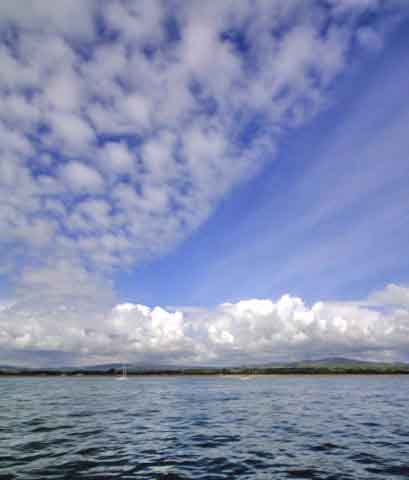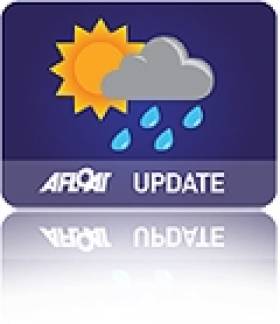Displaying items by tag: Bray
Easterly Winds Cause Damage to Yachts in Bray Harbour
#BRAY – We reported on storm damage in Skerries last week when the Irish Sea Champion yacht Raging Bull broke her moorings and it looks like the north-easterlies have caused similar problems further down the East coast at Bray Harbour in County Wicklow. The youtube video posted by 'dreambmx1' shows a yacht breaking free of moorings in Bray harbour last week due to to the extreme conditions. It is understood six boats have been lifted out in Bray over the past few days with boats showing varying degrees of damage. Some boats remain afloat according to the Bray Sailing Club webcam.
Bray Head 'Tornado' Footage Captured on Youtube
#TORNADO – A mini-twister, a tornado or waterspout made a spectacular appearance off Bray Head, County Wickow this morning and was captured on tape and posted on youtube by user at the same time as a lightning, thunder and hail storm hit Dublin Bay.
The UK Met Office warned earlier this week that a combination of warm ground temperatures and cold wind passing from the north west could create the perfect conditions for funnel clouds but little did we relaise it would turn up on the East coast of Ireland and only a short distance from where over 200 youths are competing in the Irish Youth Sailing Championships on Dublin Bay.
The YouTube clip above was captured by user 'aoifeno1' (East Coast Kayaks) and uploaded this morning under the summary: "Just about to take a photo of sunrise when I spotted this twister!"
Another clip was caught on tape at 6:40 after a sudden storm passed right overhead, the poster said 'hail came pummeling down and this waterspout went right past the beach and broke up when it hit land on Bray Head'.
Bray Web Cam Captures Storm Scenes
East North East winds that hit the country overnight are creating big waves on the East coast this morning. Bray Sailing Club's web cam is picking up the storm waves breaking at the mouth of the North Wicklow harbour HERE. (Check back at lunchtime, the time of high water today). More Webcam views at Dun Laoghaire HERE
Bray Sailing Club
 Bray is a seaside resort a few miles South of Dublin. The sailing
club overlooks the harbour, which is at the North end of the promenade.
Bray is a seaside resort a few miles South of Dublin. The sailing
club overlooks the harbour, which is at the North end of the promenade.
Left: Wicklow and Bray
We cater for both cruisers and dinghies, with a full program of racing. The tide influences most of our activities, for the harbour dries at low water.
The club is more than a hundred years old, and many former members have earned national and international reputations.
New members are always welcome.
Longitude 53° 12.5' North, Latitude 6° 6.1' West, VHF working channel 11
(Above information and image courtesy of Bray Sailing Club)
Bray Sailing Club, The Harbour, Bray, Co Wicklow. Tel: (+353 1) 286 0272
Have we got your club details? Click here to get involved































































